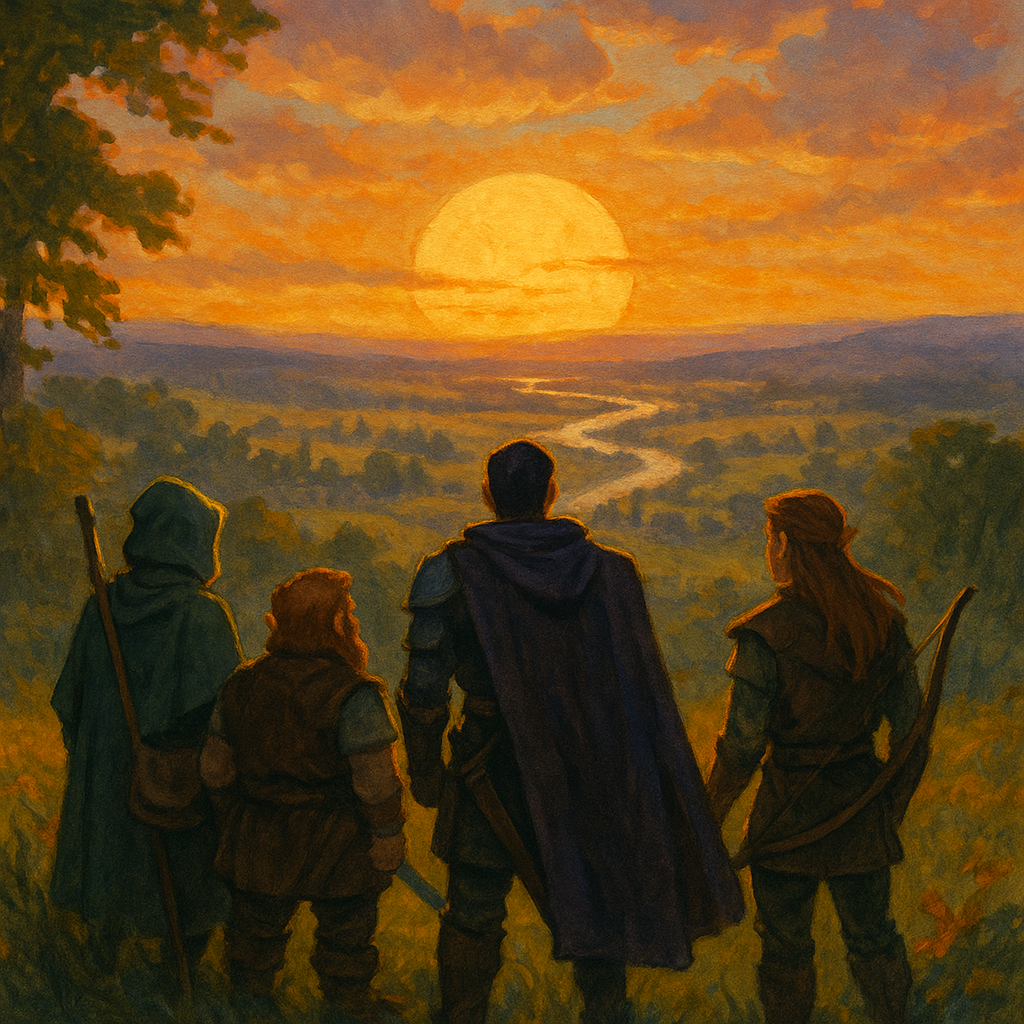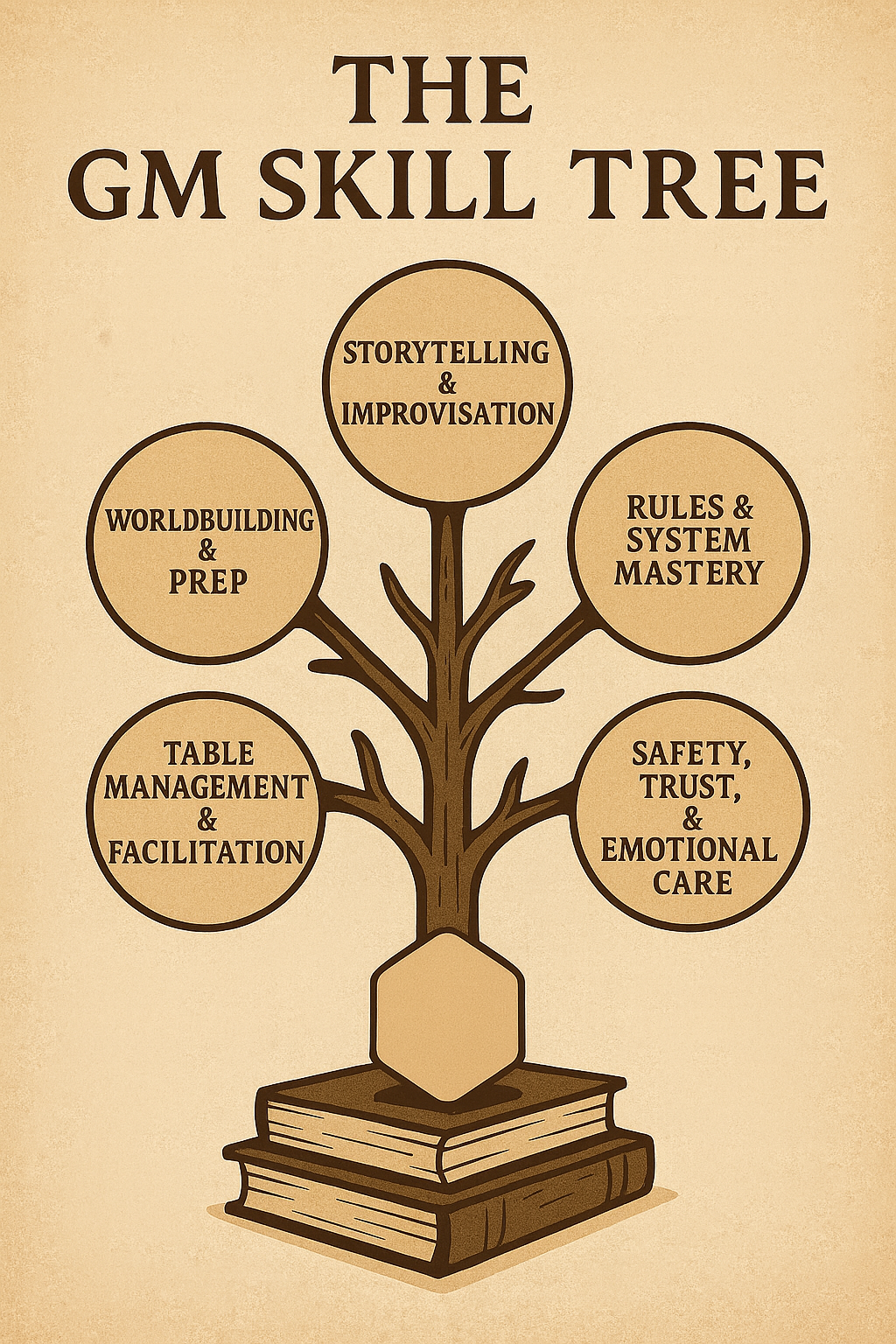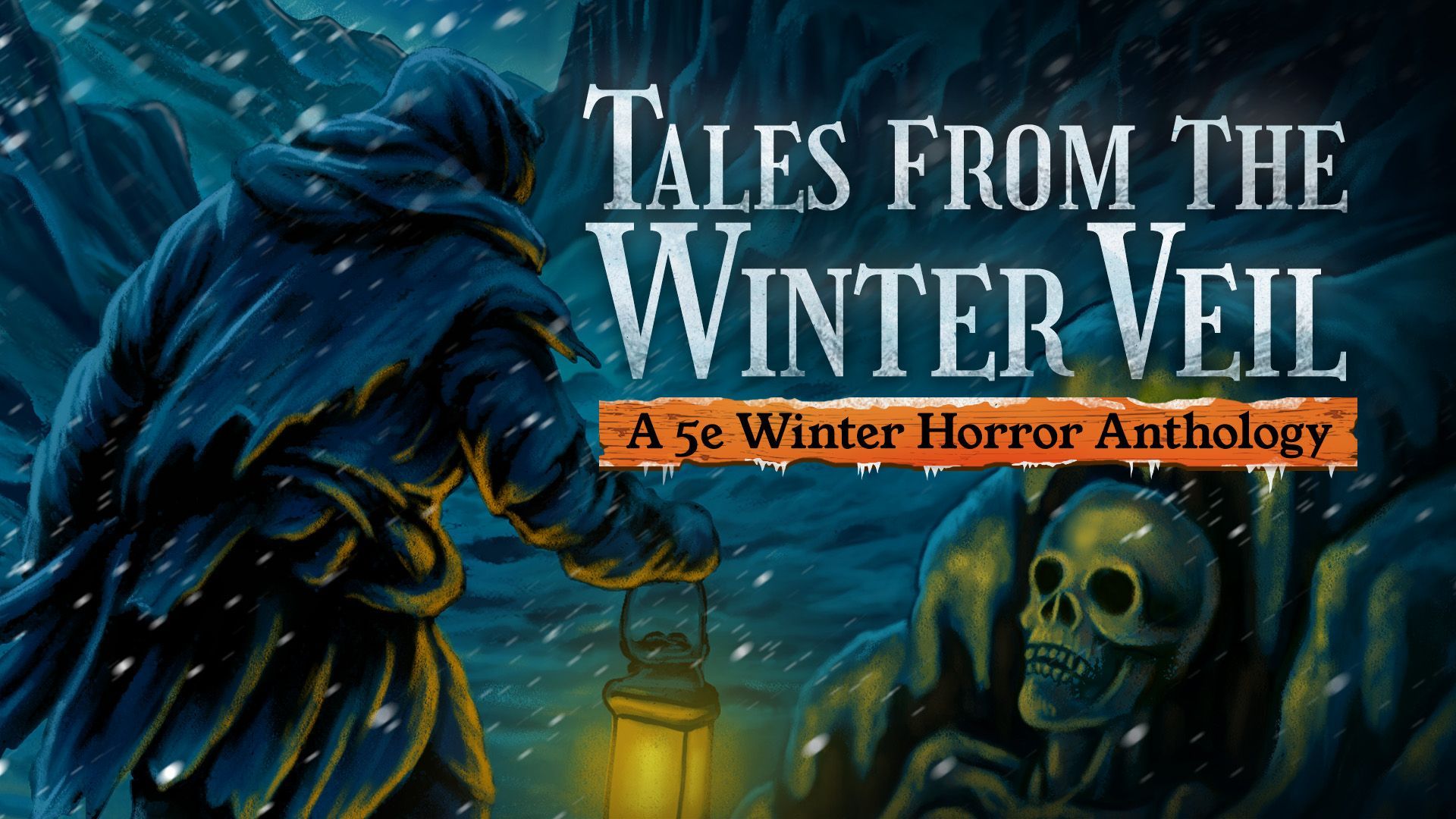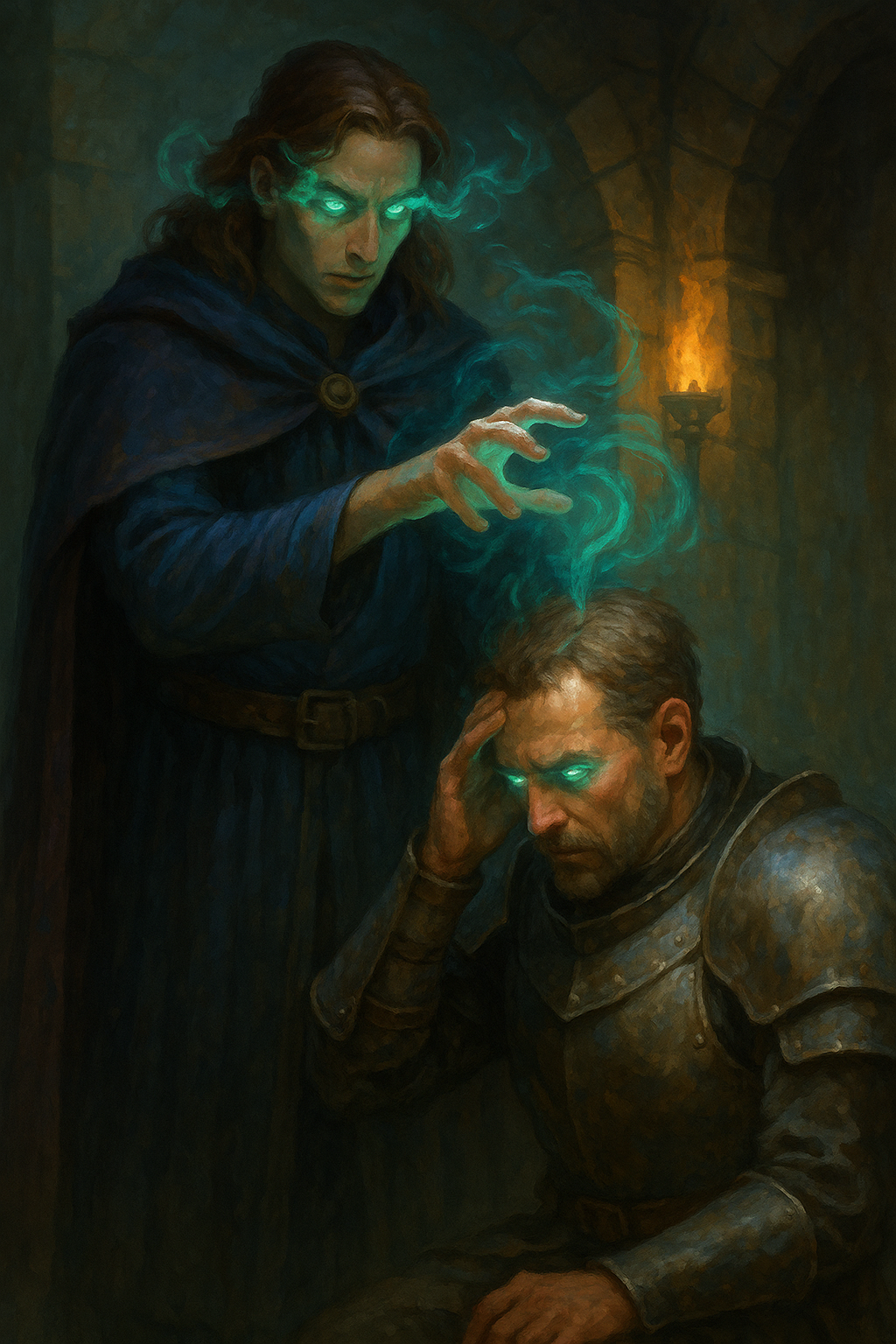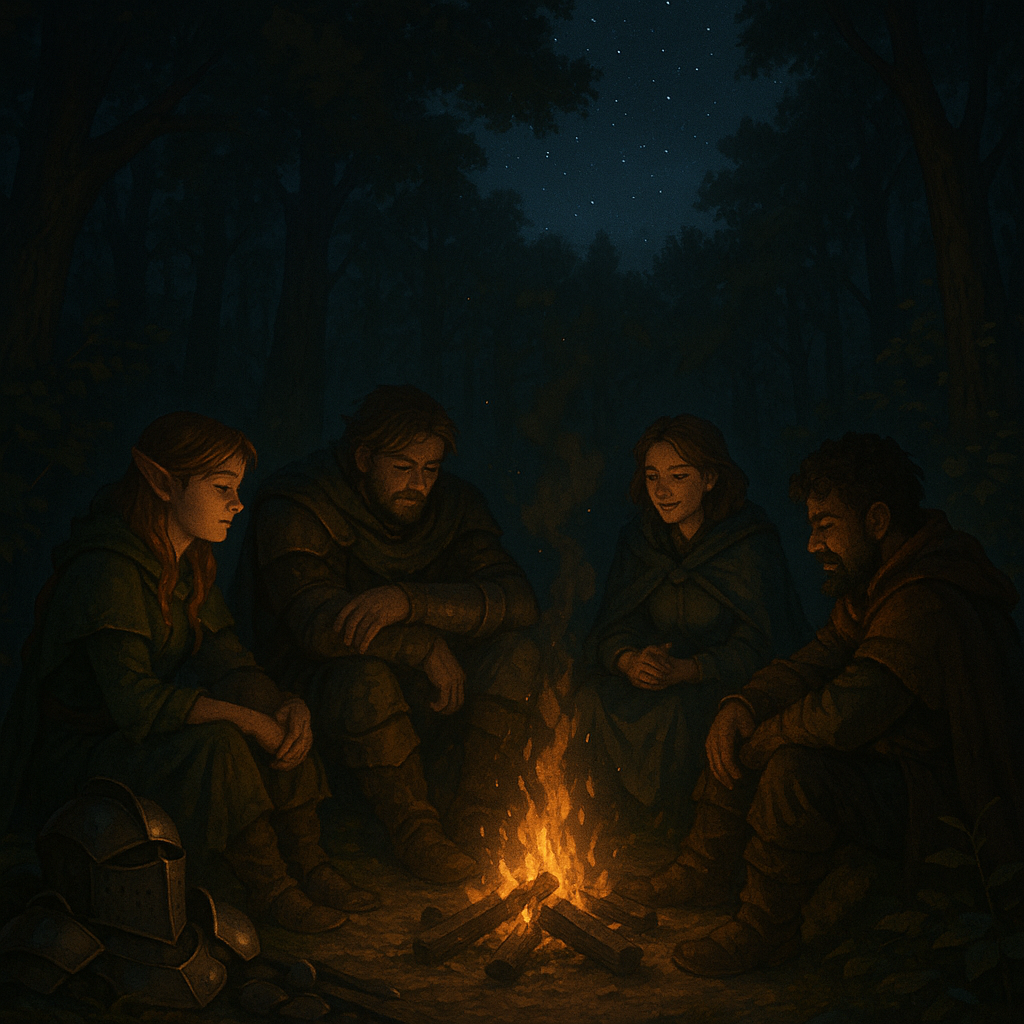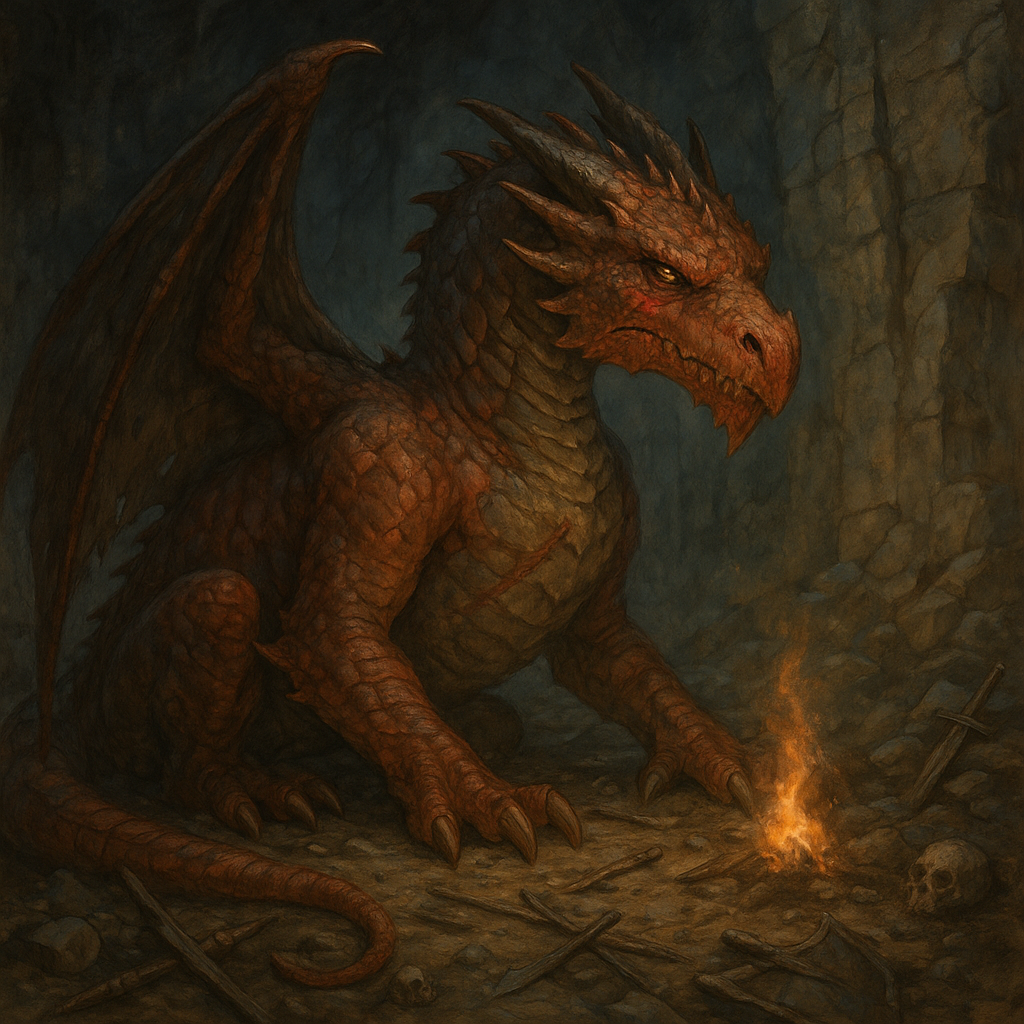Layered Maps: Secrets in the Cartography: Hidden Paths, Floating Regions, and Dimensional Overlays
Maps, like ogres and onions, have layers
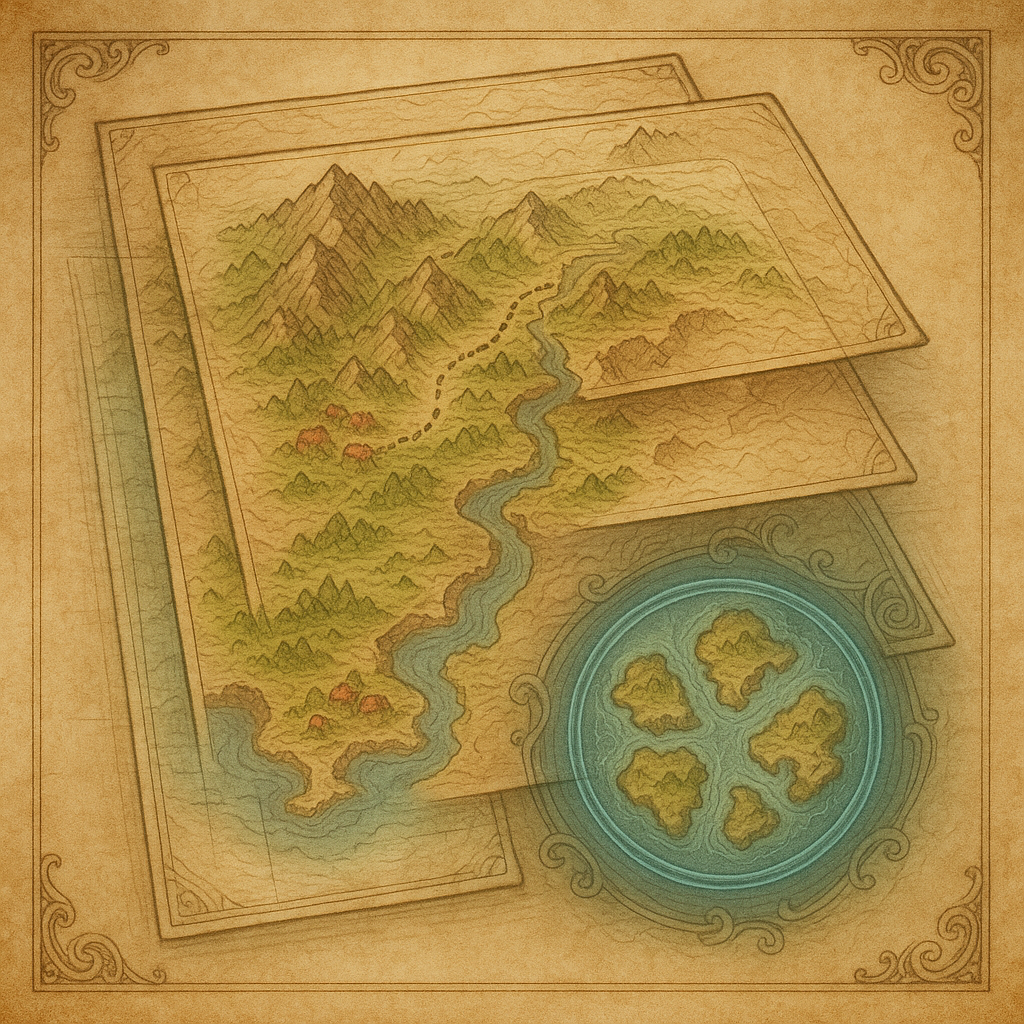
Dear Readers,
If you've ever handed your players a hand-drawn map only to watch them nod and put it away until combat starts, you're not alone. Most maps in D&D are static, functional, and ultimately shallow. They tell you where things are—not what lies beneath, beyond, or above.
But what if your maps hid secrets? What if the world itself shifted with the right perspective, spell, or mistake? Today, we’re going deep on Layered Maps: dynamic cartography that reveals secrets through exploration, magic, and story progression.
This isn't just a trick. It's a mindset shift. Maps don’t have to be final. They can lie. They can change. They can evolve.
We’ll explore three powerful ideas:
- Hidden Paths: Information that emerges through decoding, clues, or in-world events.
- Floating Regions: Mobile, shifting, or time-anchored locations.
- Dimensional Overlays: Stacked or parallel realities occupying the same space.
By the end of this post, you’ll have practical tools to reshape how players interact with your game world’s geography—and how maps become puzzles, not just props.
The Philosophy of Layered Mapping
Most DMs think of a map as a top-down summary of known geography. But in a fantasy world, where magic warps reality and history is written by victors, maps should reflect uncertainty, secrets, and layers.
A Layered Map is more than just a visual. It's a living artifact. It can mislead, evolve, or reveal depending on who looks at it and when. It demands curiosity.
Think of your map like a dungeon:
- It contains puzzles.
- It hides rewards.
- It tells a story.
Maps don’t have to be accurate. They have to be interesting.
Layer One: Hidden Paths
What They Are
Hidden paths are roads, tunnels, portals, or tracks that don’t appear on standard maps. They are unlocked through investigation, history, spells, or NPC knowledge.
How to Build Them
1. Historical Clues
A ruined keep contains a faded mural showing a bridge that doesn’t exist on current maps. Research reveals it collapsed, but a buried tunnel remains.
Tool: Let players discover map fragments or old charts. These contain incomplete, cryptic references to hidden locations.
2. Magic Revelation
Only visible under moonlight, or while under the effects of True Seeing. Or maybe the map changes after using Comprehend Languages.
Example: The map has celestial script that only becomes readable during a lunar eclipse.
3. Cartographer Errors
Maps deliberately exclude places due to danger, politics, or taboo. What isn’t on the map matters just as much as what is.
Twist: A local guild redacted locations from public maps to protect their monopoly on teleportation circles.
4. NPC-Informed Paths
An old traveler draws a correction on the party’s map, revealing an ancient smugglers’ route through the mountains.
Tip: Don’t always confirm immediately. Let players test the route. Make them earn certainty.
Design Considerations
- Color-code hidden vs. revealed paths.
- Use layered VTT tools (like Fog of War or toggles).
- Hidden paths should feel like earned discoveries, not DM fiat.
Layer Two: Floating Regions
What They Are
These are regions that move, appear only at certain times, or shift through planes. Unlike hidden paths, these places don’t stay put.
Think moving cities, ghost islands, pocket dimensions, and seasonal territories.
How to Use Them
1. Chrono-Shifted Locations
A ruin appears only during a blood moon. A tower floats above the clouds, visible only during thunderstorms.
Map Mechanic: The location is drawn in transparent ink. Players only see it if the map is heated (or metaphorically: only when the event happens).
2. Mobile Strongholds
A city mounted on a colossal turtle. A pirate island that sails the seas. A traveling carnival that crosses planes.
Challenge: Players must predict or discover the region’s trajectory to find it.
3. Phantom Terrain
Some maps show things that don’t exist yet but will appear later. Think time-traveling ruins or future settlements.
Narrative Use: This rewards long-term campaign planning. It turns exploration into prophecy.
4. Ethereal Duplicates
A duplicate of a known location exists on the Ethereal Plane. Same layout, different dangers.
Twist: The players realize they’ve been referencing the wrong layer the whole time.
Tips for Managing Floating Regions
- Build a calendar that ties into these regions.
- Give players tools to track patterns (journals, NPCs, riddles).
- Show the consequences of arriving early or late.
Impact on Gameplay
- These locations promote replayability and curiosity.
- They create player-driven motivation: "We have to get there before the eclipse."
- The map becomes part of the puzzle.
Layer Three: Dimensional Overlays
What They Are
These are multiple realities stacked onto the same physical geography. Think Feywild vs. Material Plane, or layers of the Abyss.
A castle exists in both the Shadowfell and Material Plane—but has different inhabitants and hazards in each.
How to Integrate Them
1. Dual-Layer Maps
Give players a map with two sides: one for the physical plane, another for its magical twin.
Variation: A magical lens reveals both versions at once.
2. Phase-Locked Locations
The map flickers magically when the players approach a leyline nexus. An ethereal version of a ruin overlaps with the visible world.
Mechanic: Let players "phase" to the overlay at certain sites.
3. Reality Collisions
Rifts cause elements of multiple dimensions to merge.
Scenario: A battlefield where undead bleed through from the Shadowfell at random intervals.
4. Time-Shifted Overlays
The map shows what a location used to look like—and in specific areas, that version still exists.
Narrative Use: Layer ancient architecture onto current city plans. Players fall through broken floors into intact dungeons beneath time.
Why They Work
- They force players to think spatially and metaphysically.
- They add a sense of mystery and instability.
- They let you recycle maps creatively.
Putting It All Together: Designing a Layered Map Experience
Let’s build a sample scenario using all three layers.
The Map: The Crimson Fold
A hand-drawn map shows a mountainous valley known as the Crimson Fold. It was sketched 80 years ago by a half-mad bard who vanished shortly after.
The map contains:
- Faded ink paths leading to a lake that no longer exists.
- An oddly symmetrical tree line.
- Symbols around the valley’s edge resembling clock faces.
- A second page that appears blank.
Hidden Path
Players discover that the lake was drained by dwarves, but a mine tunnel remains. When examined under the light of a fire beetle, the second page reveals a subterranean route leading to a collapsed shrine.
Floating Region
During the equinox, a floating stone ring called the Hollow Crown appears above the valley. Players learn this by studying ancient astrological charts hidden in a ruined observatory.
Dimensional Overlay
The shrine itself is fused with a version of itself from the Plane of Law. In one reality it’s ruined; in another, pristine and deadly. Phasing between reveals different monsters, traps, and rewards.
How It Plays
The players must:
- Decode map symbols.
- Time their exploration for the equinox.
- Collect lenses from local NPCs to see the overlay.
- Solve puzzles that span realities.
This transforms a simple dungeon crawl into a multi-dimensional, time-sensitive, player-driven mystery.
Tools of the Trade
Analog Tools
- Overhead transparencies: Draw different layers on clear sheets.
- UV pens and lights: For maps with hidden writing.
- Flipbooks: Let players flip between versions of a location.
Digital Tools
- VTTs (Foundry, Roll20, Owlbear): Use map layers and dynamic lighting.
- Dynamic weather/time plugins: To reveal floating regions.
- Multi-layer tokens: For plane-shifted versions of the same map.
How to Introduce Layered Mapping to Your Table
1. Start Small
Don’t throw every map gimmick at once. Introduce a hidden path first. Then expand into overlays and floating regions.
2. Establish Cartographic Lore
Make maps part of the world’s culture. Maybe only elves use dimensional charts. Maybe dwarves encode maps with song.
3. Reward Curiosity
If players interact deeply with maps, reward that. Let the secrets matter.
4. Don’t Over-Explain
Mystery is part of the appeal. Let players theorize, test, and fail. Build legend into geography.
Pitfalls to Avoid
1. Too Much Complexity Too Soon
Layered maps can overwhelm new players. Use clear signposts.
2. Railroading Through Layers
Let players opt in. If they ignore the overlay, the story still progresses.
3. No Payoff
If a layered map leads nowhere, players stop engaging. Always follow discovery with narrative or mechanical reward.
4. Inaccessible Information
Don’t lock the map behind obscure knowledge checks. Allow multiple paths to the same revelation.
Bonus Idea: Living Maps
What if the map changes with the players?
- Paths appear as they walk them.
- The ink shifts based on party alignment.
- The map gains annotations as lore is uncovered.
Living maps turn a passive item into a party member. Consider:
- A sentient scroll that talks.
- A druidic map that reacts to seasons.
- A cursed chart that shows the user’s doom.
Final Thoughts
Layered maps open up a new dimension of storytelling. They’re tactile mysteries, visual riddles, and narrative drivers all in one. They shift your game from "Where are we going?" to "What haven’t we seen yet?"
By blending hidden paths, floating regions, and dimensional overlays, you create a campaign world that feels alive beneath the players' feet. And when your players hold a map and whisper, "Wait... what if this part isn’t showing everything?" — you’ve already won.
Until next time, Dear Readers...















